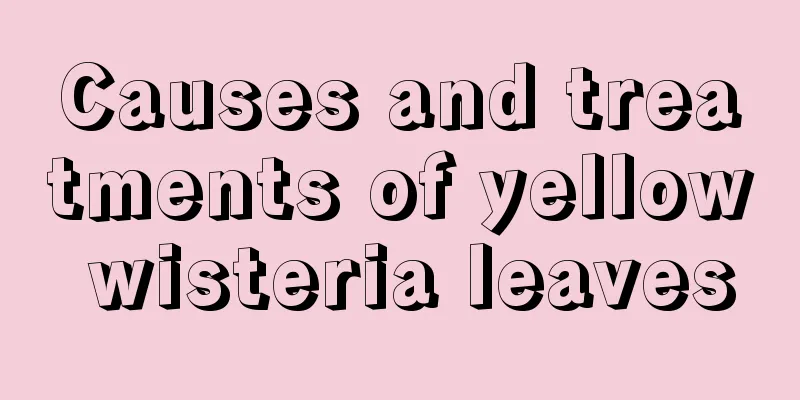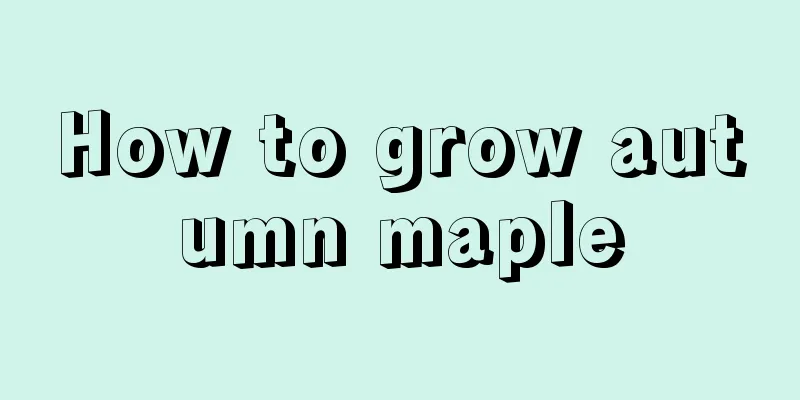Causes and treatments of yellow wisteria leaves

1. Too much waterReason: Wisteria doesn't need a lot of water to grow. If you water too much, the new leaves growing on the top of the wisteria will turn light yellow, the old leaves below will also turn yellow, and then the whole wisteria will slowly wither. Measures: If you water too much, you need to change the pot and soil, and trim off the rotten roots. You should control the amount of watering on a daily basis and don't water it constantly when you are idle. Then loosen the soil frequently and move it indoors if it rains. 2. Soil droughtReason: Wisteria prefers fertile and moist soil. If the soil in which it grows is too dry, it will stunt its root growth. Over time, the plant will gradually turn yellow from bottom to top and then fall off. Measures: If the soil is dry, simply increase the frequency of watering to increase soil moisture, but do not water too much at once. 3. Improper fertilizationReason: Whether it is due to lack of fertilizer or too much fertilizer, the leaves of wisteria will be uneven and turn yellow. Because of the lack of nutrients, the root system cannot extend and grow normally. Measures: Control the amount of fertilizer applied. If the growth is slow, add additional fertilizer. If too much fertilizer is applied, dilute the fertilizer by adding water in time. If the situation is serious, the soil needs to be changed and replanted. 4. Soil is alkalineReason: Wisteria requires acidic soil for its growth. If the leaves turn yellow because of the soil, it is probably because the soil is alkaline. Measures: If you want to save trouble, you can directly change to acidic soil, or apply ferrous sulfate to gradually affect the soil quality, allowing the leaves to gradually return to green. 5. Improper lightingReason: Wisteria needs sunlight to grow. If it is not exposed to sunlight for a long time indoors, it will cause yellow leaves. If exposed to strong light, yellow leaves may also appear. Measures: Wisteria can be grown in a place with diffuse light to avoid direct sunlight. |
<<: Causes and treatments of yellow leaves of crape myrtle
>>: Causes and treatments for yellowing leaves of purple magnolia
Recommend
How many years does it take for calcium fruit to bear fruit?
Introduction to planting calcium fruit The suitab...
Can lucky bamboo be grown in soil? How to grow it in soil
1. Can lucky bamboo be grown in soil? Lucky bambo...
When is the best time to prune chrysanthemums?
The effect of pruning multi-headed chrysanthemum ...
Bird of Paradise breeding tips and precautions
Bird of paradise is also called Strelitzia regina...
How to plant magnolia seedlings
1. Planting time If you want to plant magnolia se...
What to do if ivy loses leaves
1. Lighting The light must be controlled well, be...
How to grow yew quickly
1. Suitable soil Good soil quality can promote fa...
Can Spathiphyllum be grown hydroponically? Is hydroponics better or soil cultivation better?
Can Spathiphyllum be hydroponically cultivated? S...
Can potassium carbonate be used as fertilizer?
Potassium carbonate as fertilizer Potassium carbo...
How to water a cactus
1. Watering in all seasons 1. Watering in spring ...
Common diseases of Podocarpus and their control methods
As a common ornamental tree species, Podocarpus i...
Vegetable planting management guide in June
In June, with the arrival of summer, the temperat...
How to grow the succulent plant Phalaenopsis tiliaceus
Growth habit Echeveria tatarinowii is a succulent...
How many pounds of Scutellaria baicalensis per mu? Yield and benefits per mu
Scutellaria baicalensis yield per mu Scutellaria ...
What kind of pesticides are needed for fig tree cultivation?
Fig is a tree of the genus Ficus in the Moraceae ...









